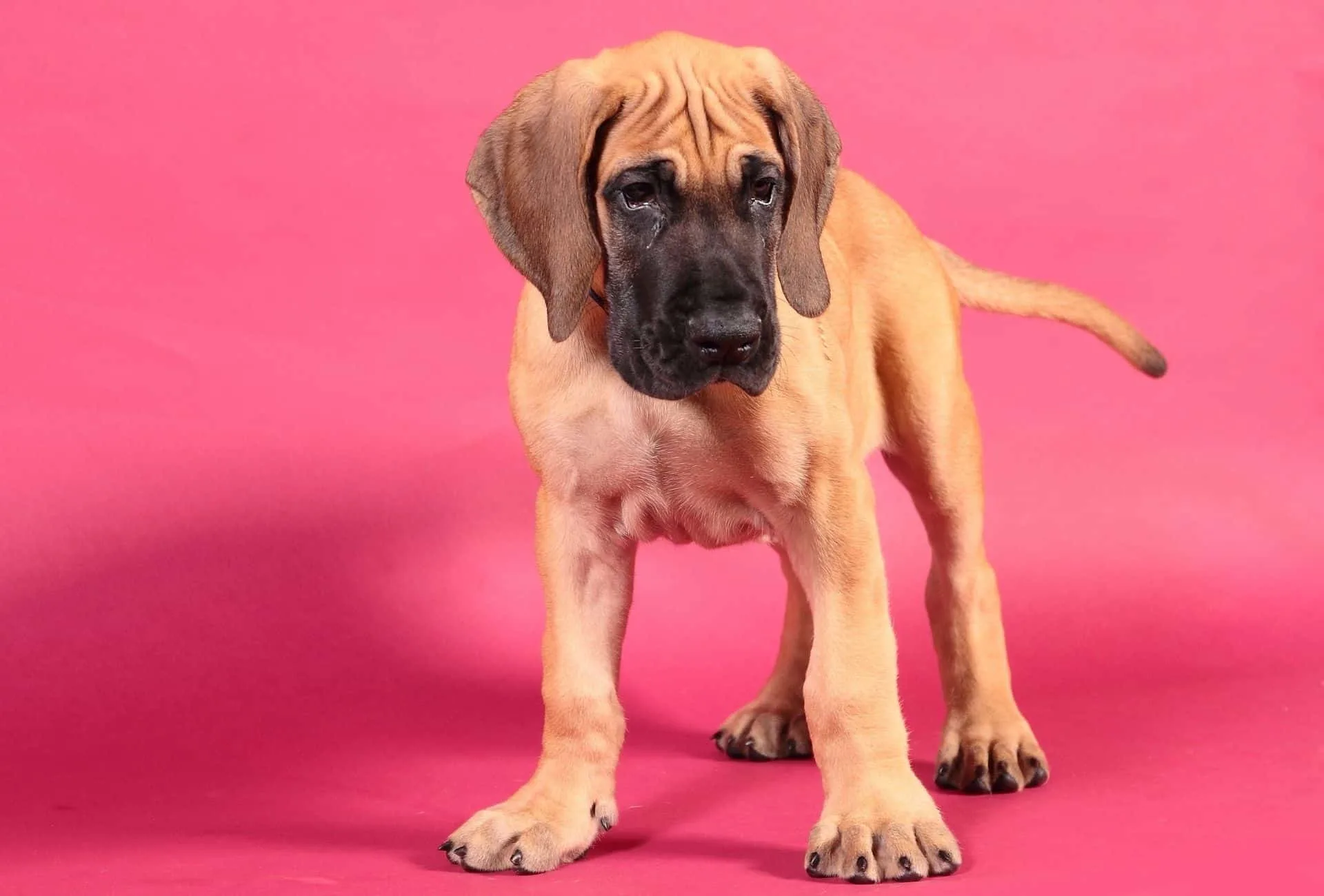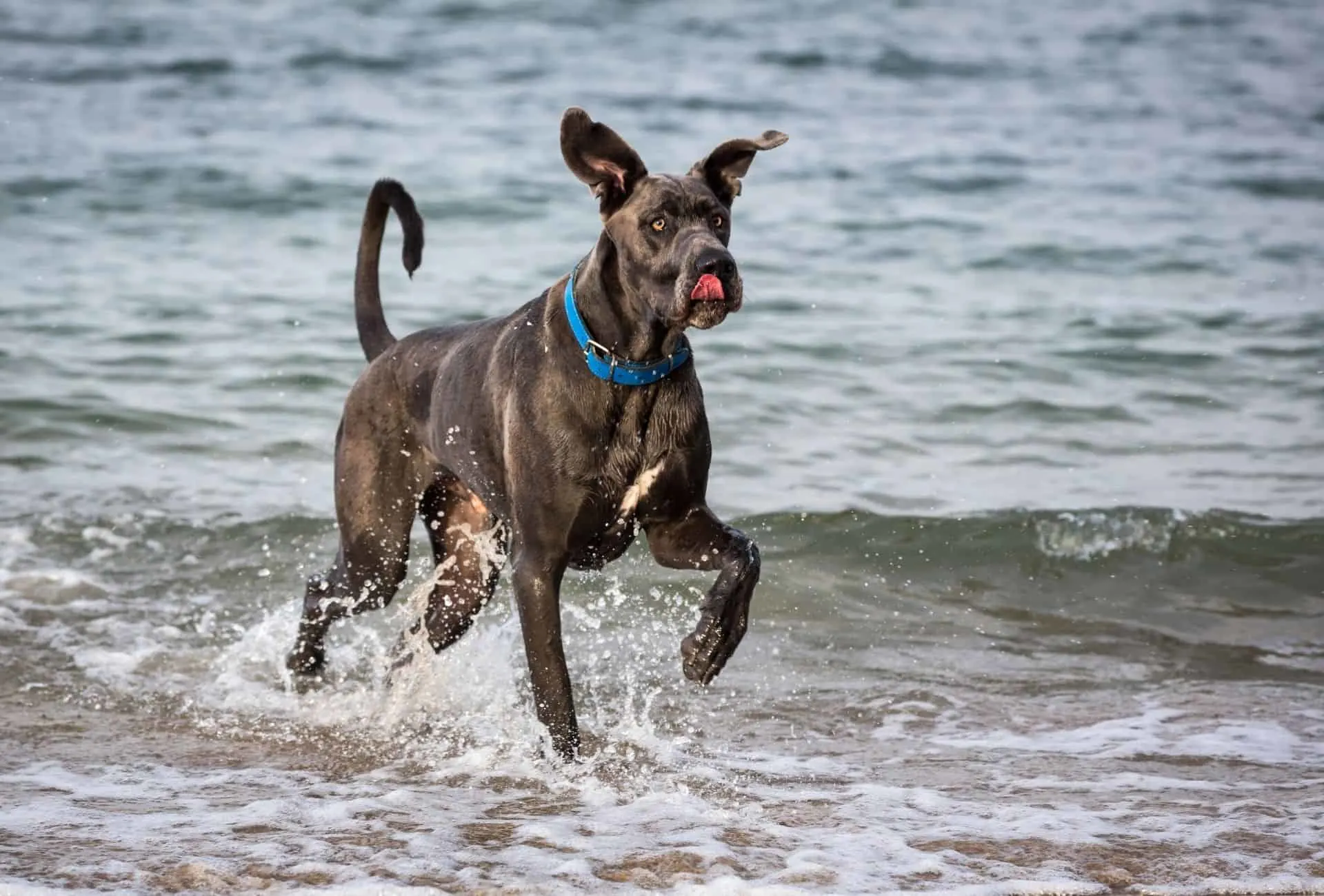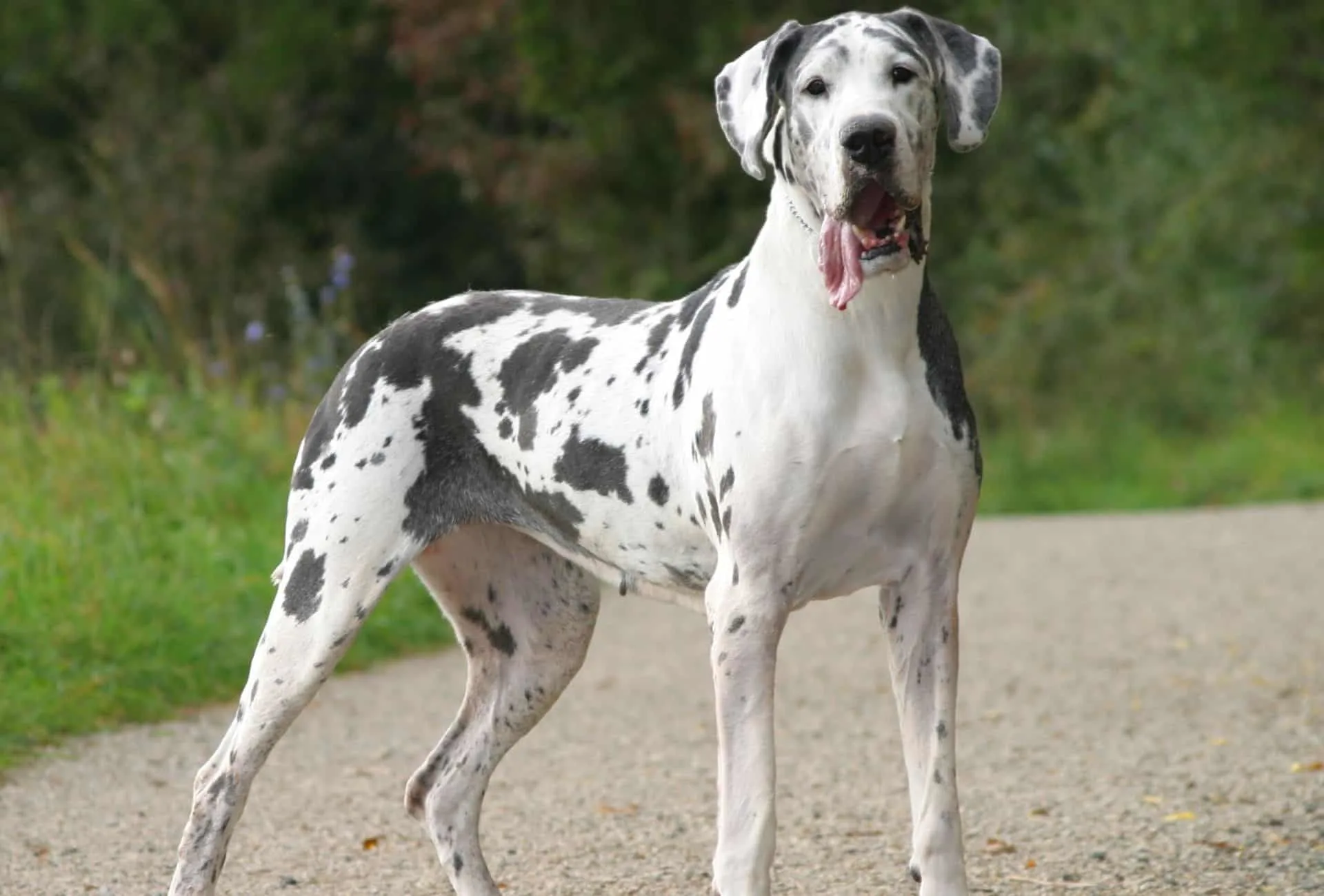I’m sure you’ve heard that one of the tallest dog breeds in the world is also a gentle giant.
While some may be deterred by their size (which can come with some requirements and higher maintenance), others are intrigued by their exceptional personality and how gentle they are.
I am talking about the Great Dane.
Well, sadly their size comes with a trade-off which is a significantly reduced lifespan compared to nearly all of the smaller dog breeds.
A Pomeranian can statistically live nearly 10 years longer than a Great Dane.
It’s no wonder, having one that weighs 100 pounds (45kg) and stands 28 inches (71cm) tall means you probably have a smaller female.
Read on to learn more about the lifespan of a Great Dane, fun facts, as well as the possible medical issues, and what you can do to increase longevity!
How Long Do Great Danes Live?
The average lifespan of a Great Dane is 6-8 years but with proper care, a healthy diet, and exercise Great Danes can live 8-12 years.
Many dog owners are deterred by the high relatively short lifespan but on top of that comes the fact medical bills can rack up quickly.
However, they don’t know that it’s possible to influence your Great Dane’s lifespan.

Diet, exercise, and the environment all have an impact on your Great Dane’s lifespan. An inappropriate diet can increase kidney or heart issues.
A well balanced diet is essential for every part of their body and if you fuel your dog with the right food everyday, he will have the best chances on living a long and healthy life.
Given their size and weight, they have an increased risk of developing bone and joint problems which can shorten their life expectancy.
That’s why supplements such as Glucosamine and Chondroitin are so important for your Great Dane.
Can Great Danes Live Longer Than 8 Years?
Yes, with proper care, a healthy diet, and exercise Great Danes can live beyond the age of 8 years.
However, there’s no guarantee for this happening, but there are factors that determine their lifespan.
Let’s find out why they’re not living as long as other breeds in the first place.
Why Do Great Danes Have Short Life Spans?
A fairly recent study has found that large breeds experience an earlier onset of senescence with an increased rate of aging.
They also proved that the average lifespan of a dog drastically decreases when body mass increases, especially in giant breeds.
Another part of the reason for their shortened lifespan is due to a lack of genetic diversity.
What does this mean?
Breeders have had difficulty finding good matches which can lead to complications such as deformities and diseases that are hard or impossible to treat.
As mentioned before, the Great Dane’s large size can make them more susceptible to joint problems which are exacerbated by their weight.
This can shorten their lifespan as they are at risk for developing bone and joint issues.
It doesn’t help that this breed comes with a plethora of possible medical issues.
What Do Most Great Danes Die Of?
Two of the most common causes of death in Great Danes are cancer and bloat, according to the Great Dane Club of America.
However, there are also various other diseases that can affect your gentle giant, such as:
- DCM (Cardiomyopathy)
- Hip Dysplasia
- Hypothyroidism
- Cataracts
- Wobblers Syndrome
- HOD and Pano
As recommended by the OFA, having a Great Dane checked for heart issues, hip dysplasia, hypothyroidism, and eye issues is a great way to be able to take appropriate actions (and find responsible breeders in the first place).
Cancer
When it comes to getting cancer, Danes just as susceptible to it as other dogs.
About 1 in 4 dogs will suffer from cancer at one point in their lifetime.
However, both lymphoma and osteosarcoma are more common in Great Danes than in other breeds.
Crossbreeds are no exception to this and there’s no known way to eliminate this cause of death in Great Danes.
While treatment options hopefully continue to improve, you can look into other tools like feeding a raw diet in the meantime.
Bloat
Bloat is a condition in which the stomach fills up with gas and twists on its axis. If untreated, it eventually leads to death.
Possible causes of bloat are overeating, ingesting too much water after eating a large meal, gulping down air when excited or before exercise.

A few precautions to help decrease the risk of bloat include slowing down feedings and feeding several small meals throughout the day rather than one big meal.
Great Danes need to be fed quite much anyway and making sure that they won’t wolf it down will help a great deal.
You should also let them digest for at least an hour before going on a walk.
DCM (Heart failure)
Great Danes are at risk of developing DCM which stands for dilated cardiomyopathy and is an inherited heart disease that can affect not only Great Danes but also other breeds like Saint Bernards and Doberman Pinschers.
Preliminary research supports the fact that DCM (Cardiomyopathy) in Great Danes is an inherited disease.
If you suspect your Dane may have the disorder, ask for an echocardiogram of their heart.
The best prevention?
Buying a puppy from a breeding program where both parent dogs went through regular health checkups by a veterinarian.
The check-up does not guarantee that DCM will not develop in the future though.
Hip Dysplasia
Hip dysplasia is a condition that affects the hip joint and is common in many dog breeds but Great Danes are one of the most susceptible because of their lanky build and height.
Dogs with hip dysplasia are typically diagnosed when they’re around two years old.
This is because symptoms usually don’t show up until the growth has finished.
It can cause pain and limited range of motion, which can make it difficult for your dog to walk or even stand up.
Some dogs will show no symptoms at all, while others may be in so much pain they won’t want to move.
If you notice a sudden change in their movement or behavior, such as limping or reluctance to move around, get your dog x-rayed by a vet.
Telltale signs of this condition include an inability to jump up on furniture without assistance, difficulty going downstairs, and abnormal gait while walking.
If your dog exhibits any of these symptoms for an extended period, it is important to take them in for an examination with your vet asap.
The good news is there are steps you can take as a pet parent (with guidance from your vet) that may help prevent hip dysplasia from becoming an issue down the road.
We’ll cover more of that below but the biggest thing you can do if you’re not adopting is buying a puppy where the parent dogs have x-rays and everything’s clear.
Important: Ask for the x-ray pictures, don’t take their word for it. Learn to read them or get a second vet to do it for you.
Hip dyplasia is inherited and this can help a great deal with reducing the chance of getting a pup with this future issue.
Hypothyroidism
Hypothyroidism in Great Danes is a condition that is typically caused by an autoimmune disorder, where the thyroid gland does not produce enough of its hormone and thus impacting the metabolism.
It can be difficult to diagnose at first because there are few symptoms and many other illnesses can cause similar symptoms like lethargy or weight loss.
However, if you suspect that your Great Dane is suffering from this condition, it is important to take them in for a checkup with their vet (bloodwork might reveal high TSH levels and low T4 levels).
The conventional treatment of hypothyroidism will generally be lifelong and includes daily medication as well as hormone injections every couple of weeks or so.
Since this is also heritable, using picking a good breeder is key.
Cataracts
Cataracts in Great Dane are relatively uncommon eye problems, but blindness from cataracts or abnormal eyelids (e.g., entropion) is possible.
Buying a puppy? A CERF exam can ensure that the eyes are normal and have no issues.
What is the Longest a Great Dane Has Lived?
Knowing how old the oldest Great Danes have been can give you an idea of what kind of lifespan to expect if you optimize every possible factor (and have a bit of luck).
While a quick search for this exact term “longest a Great Dane has ever lived” spits out that the oldest living Great Dane is 7 years old, that’s only among the living ones and it’s also outdated.

The dog that’s referred to in this article has sadly passed away with 8 1/2 years in early January 2021 and is not the oldest living Great Dane on record anymore.
What’s interesting is that the dog who’s held the title for oldest living Dane was the tallest Great Dane in the world too.
One dog food company claims that one of their clients’ dog has reached 11 1/2 years old which is truly kind of impressive. The dog’s name is “Pirate”.
I agree with the statement that diet is key, though it’s debatable what kind of diet is truly the best one for canines (I generally recommend the raw diet).
Another report surfaced 02/2021 which states that a Great Dane named Stella in Hixson has reached 13 years of age.
Anecdotal evidence suggests there have been a Great Dane that has breached 15 years of age.
So, as you see that’s a pretty big span.
In Conclusion
Even before buying a Great Dane puppy, make sure that the breeder has done proper health testing on all the relevant heritable diseases.
Do your research on the right type of exercises and make a decision on what diet is best for your dog.
You can give your best to improve your own Great Dane’s lifespan and hope that he’ll reach at least the double digits. Enjoy every day withy your big boy!
